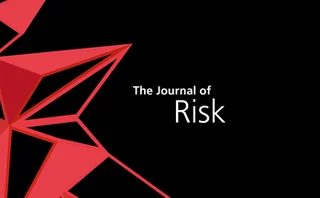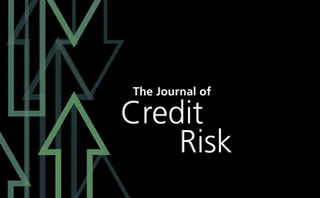Loss given default (LGD)
Finding the corporate credit cycle for IFRS 9
Decomposing corporate default rates helps identify credit cycles
Covid policy risk hangs over bank stress tests
Banks and regulators are second-guessing the policy response to new outbreaks
EU banks’ credit risk estimates deteriorated in Q2
Weighted average corporate borrower PD across countries climbed to 2.04%
Benchmarking loss given default discount rates
This paper provides a theoretical and empirical analysis of alternative discount rate concepts for computing loss given default rates using historical bank workout data.
Credit Suisse, UBS counterparty exposures ballooned in Q2
Risk-weighted assets lagged surge in EAD
US banks’ corporate default indicators worsened in Q2
Median probability of default increases 38bp to 1.7% on the quarter
EU banks’ Q1 credit risk estimates show little Covid effect
Probability of defaults for retail exposures edged up only slightly quarter-on-quarter
Corporate loan default risk spiked at US G-Sibs in Q1
Median probability of default increases 17bp to 1.39% on the quarter
As Covid snaps credit models, lenders turn to stress-testing
Banks enlist scenario analysis to bolster creaking default models
Goldman hits the Collins floor
Changes to loss-given-default models caused advanced approaches credit RWAs to plummet
IFRS 9 product of the year: Moody’s Analytics
Asia Risk Technology Awards 2019
EU banks’ credit risk estimates continue to fall
Mean average weighted corporate PD down to 2.24% from 2.61% in Q1 2018
Loss given default estimation: a two-stage model with classification tree-based boosting and support vector logistic regression
In this paper, the authors using a data set composed of five Japanese regional banks, propose an loss given default estimation model using a two-stage model, classification tree-based boosting and support vector regression (SVR).
Default risks in peripheral eurozone inch up
Italian corporate PD estimates up to 9.12%
Podcast: Kenyon and Berrahoui on the pitfalls of PFE
Quants propose replacement to existing credit risk measure
Does credit risk need an expected shortfall-style revamp?
Quants propose tail risk-sensitive measure for counterparty credit risk
Counterparty trading limits revisited: from PFE to PFL
The potential future loss is proposed as a replacement for PFE
Tools to blunt credit risk popular at EU banks. But why?
Just 1% to 5% of exposures covered by credit risk mitigants
Pooled resources offer way to keep credit models afloat
Supervisors drive banks to seek more corporate default data and cost-effective model improvements
EU banks slash default risk estimates for corporates by 30%
Probabilities of default fall on average across 39 countries
Credit data: zeroing in on supply chain risk
Data highlights the risks posed by economic protectionism, writes David Carruthers of Credit Benchmark
A new model for bank loan loss given default by leveraging time to recovery
In this paper, the author estimates a two-equation system: one for LGD that incorporates time to recovery as one of the model explanatory variables, and the other for time to recovery using survival models that address data censoring.
New credit risk modelling approach touted to reduce CCAR bias
Academic aims to address gaps in existing LGD forecast method with two-equation fix
Credit data: default risk still growing for Italy’s banks
Despite a drop in the bad loan ratio, default estimates continue to rise, writes David Carruthers of Credit Benchmark














